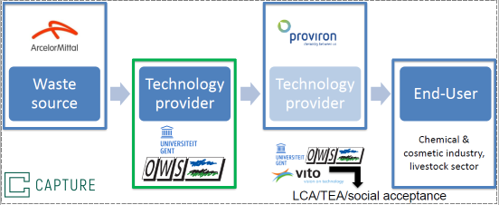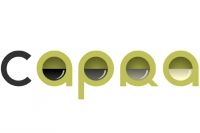- nl
menu
- Home
- Capra: upgrading steel mill off gas to caproic acid and derivatives using anaerobic biotechnology
Capra: upgrading steel mill off gas to caproic acid and derivatives using anaerobic biotechnology
close
Techno-Economic Assessment







One of the greatest challenges of the 21st century is the drastic reduction of greenhouse gas (GHG) emissions to the atmosphere to minimize/mitigate the impact of global climate change. In this context, the possibility to capture CO2 at point sources, which account for 45% of the emissions in Europe, and transforming it into added-value products, is gaining attention. The steel industry sector is one of the largest GHG contributors. In their strive for GHG emission reduction, strategies such as improvements in energy efficiency, resource recycling, utilization and recovery have already been implemented, but further emission reduction can only be achieved by capturing CO2 emissions. Valorisation of CO2 into chemical building blocks is possible through biological or chemical processes. Biotechnology is in particular a very interesting way to valorise these waste gases due to their low energy requirements and mild reaction conditions. Traditional disadvantages of biotechnology, such as low yields, low substrate affinity and low selectivity have been overcome in recent years.
ArcelorMittal is exploring the use of syngas fermentation technology as part of the CO2 emission reduction strategy. Many fermentation processes are focusing on the fuel market to take off their fermentation products, and are facing a low revenue from the end products, which sometimes require an energy-intensive distillation process to meet the quality standards. The CAPRA technology developed by OWS and UGent is offering an alternative to avoid this expensive distillation, and turns the fermentation products into a high value chemical. Ethanol/acetic acid mixtures can be transformed to medium-chain carboxylic acids by biological chain elongation, resulting in a bio-oil with higher value (more than double) compared to fuel. This bio-oil, composed mainly of caproic and caprylic acid, can be further processed in the chemical industry as evaluated by Proviron. The environmental sustainability and economic feasibility is evaluated by UGent, OWS and VITO.

